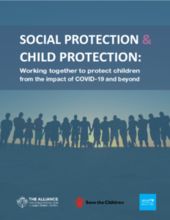To respond to the challenges brought to the fore by COVID-19, many governments have launched measures to mitigate the immediate impact of the pandemic on individuals, families, and children - many of the most critical have been through social protection systems. The United Nations Inter-Agency Working Group on Violence against Children issued an Agenda for Action that calls for a focus on social and child protection systems with special attention to the most vulnerable children. Yet globally, two out of three children have no access to any form of child or family benefit, and coverage is lowest where child poverty is highest. The COVID-19 pandemic has highlighted how critical social protection coverage is, and governments around the world have acted to put social protection measures in place to support the most vulnerable. A total of 200 countries/territories have planned or put in place over a thousand social protection measures, though many are temporary. Even so, we still see some 600 million children (this is a conservative estimate) not covered by any schemes. There is also little data indicating how refugees and displaced populations benefit from such measures, or to what extent they are linked with child protection services or outcomes. Moreover, many of the most fragile countries still have limited national measures in place. Children urgently need sustainably financed social protection systems linked to properly resourced child protection services.
The arguments made in this paper on why and how to leverage social protection towards child protection outcomes apply to both government social protection systems, as well as humanitarian cash and voucher assistance.

